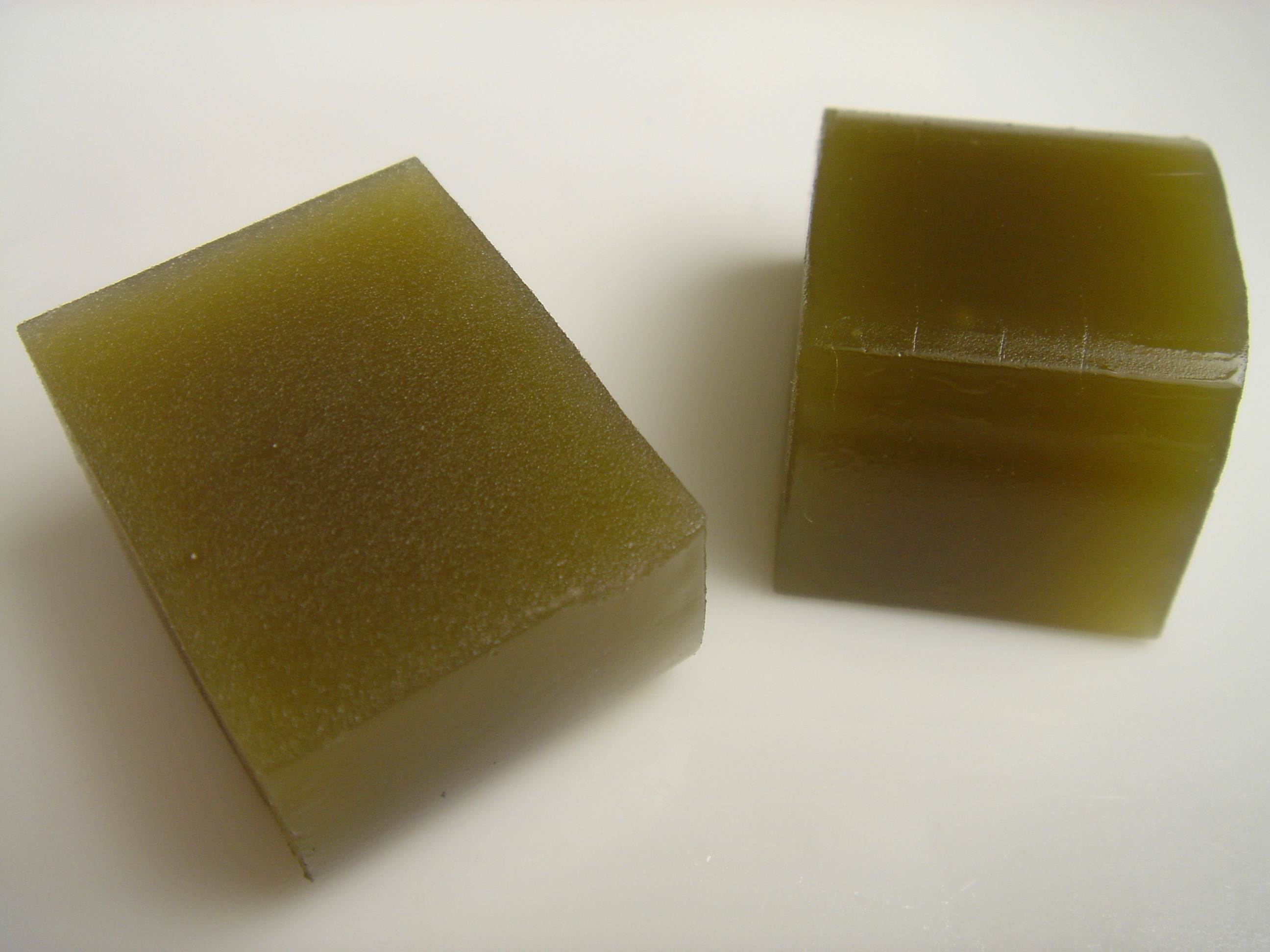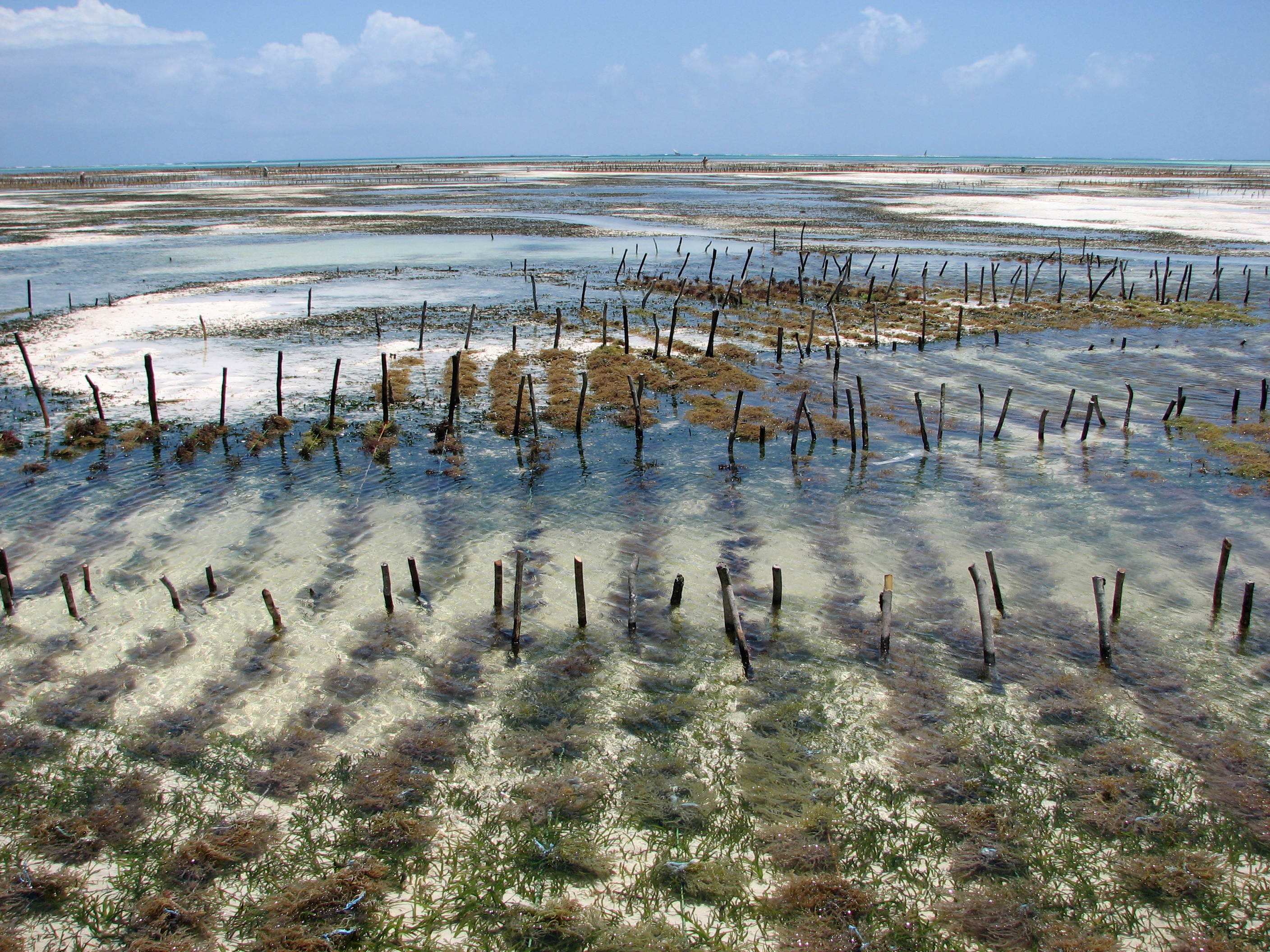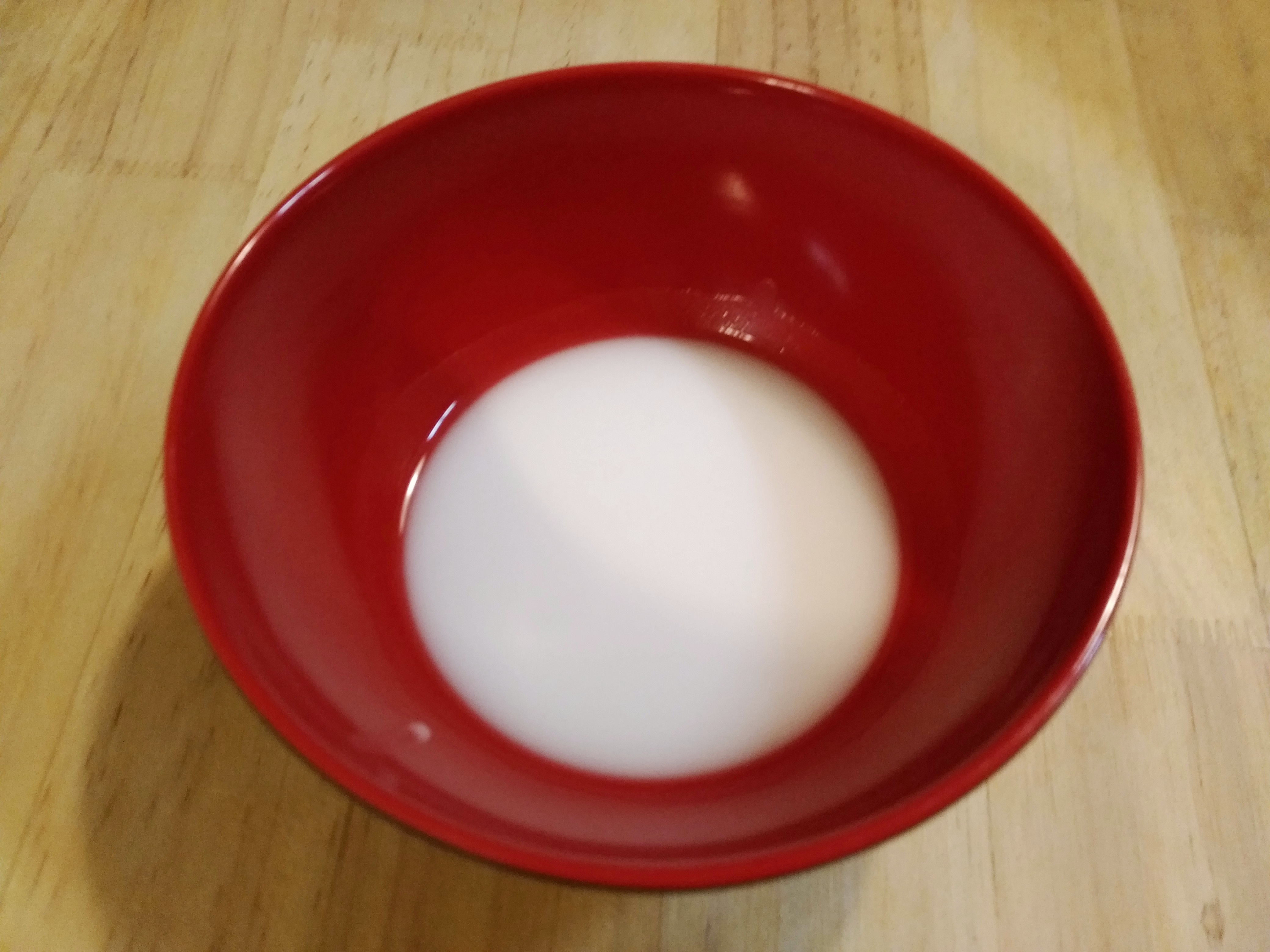|
Carrageenan
Carrageenans or carrageenins ( ; ) are a family of natural linear sulfation, sulfated polysaccharides. They are extracted from red algae, red edible seaweeds. Carrageenans are widely used in the food industry, for their gelling, thickening, and stabilizing properties. Their main application is in dairy and meat products, due to their strong binding to food proteins. Carrageenans have emerged as a promising candidate in tissue engineering and regenerative medicine applications as they resemble animal glycosaminoglycans (GAGs). They are used for tissue engineering, wound coverage, and drug delivery. Carrageenans contain 15–40% ester-sulfate content, which makes them anionic polysaccharides. They can be mainly categorized into three classes based on their sulfate content. Kappa-carrageenan has one sulfate group per disaccharide, iota-carrageenan has two, and lambda-carrageenan has three. A common seaweed used for manufacturing the hydrophilic colloids to produce carrageenan is ... [...More Info...] [...Related Items...] OR: [Wikipedia] [Google] [Baidu] |
Kappaphycus Alvarezii
''Kappaphycus alvarezii'', the elkhorn sea moss, is a species of red algae. The elkhorn sea moss varies in size, weight, and age. It is a dark greenish-brown hue and can sometimes be deep purple. The moss is cylindrical in shape throughout the seaweed. Its diameter averages 1.526 mm when dried. Near the base of the seaweed, its average length is from 1 mm to 17 mm and 1 mm to 2 mm in diameter. Firm algae are around 2 m tall, with axes and branches around 1–2 cm in diameter. It used to be believed they reproduced through vegetative fermentation, but recent studies show that they reproduce sexually. They reproduce through vegetative propagation and reproduce sexually. Cross sections of the Elkhorn sea moss have a medulla composed of small thick-walled cells interspaced among large parenchyma cells. This moss is used for various types of foods that humans consume and can also be used to make a jelly-like dessert. This moss is a very good source of mine ... [...More Info...] [...Related Items...] OR: [Wikipedia] [Google] [Baidu] |
Seaweed Farming
Seaweed farming or kelp farming is the practice of aquaculture, cultivating and harvesting seaweed. In its simplest form farmers gather from natural beds, while at the other extreme farmers fully control the crop's biological life cycle, life cycle. The seven most cultivated taxa are ''Eucheuma'' spp., ''Kappaphycus alvarezii'', ''Gracilaria'' spp., ''Saccharina japonica'', ''Undaria pinnatifida'', ''Pyropia'' spp., and ''Sargassum fusiforme''. ''Eucheuma'' and ''K. alvarezii'' are attractive for carrageenan (a gelling agent); ''Gracilaria'' is farmed for agar; the rest are eaten after limited processing. Seaweeds are different from mangroves and seagrasses, as they are photosynthetic algal organisms and are non-flowering. The largest seaweed-producing countries as of 2022 are China (58.62%) and Indonesia (28.6%); followed by South Korea (5.09%) and the Philippines (4.19%). Other notable producers include North Korea (1.6%), Japan (1.15%), Malaysia (0.53%), Zanzibar (Tan ... [...More Info...] [...Related Items...] OR: [Wikipedia] [Google] [Baidu] |
Chondrus Crispus
''Chondrus crispus''—commonly called Irish moss or carrageenan moss (Irish ''carraigín'', "little rock")—is a species of red algae which grows abundantly along the rocky parts of the Atlantic coasts of Europe and North America. In its fresh condition it is soft and cartilaginous, varying in color from a greenish-yellow, through red, to a dark purple or purplish-brown. The principal constituent is a mucilaginous body, made of the polysaccharide carrageenan, which constitutes 55% of its dry weight. The organism also consists of nearly 10% dry weight protein and about 15% dry weight mineral matter, and is rich in iodine and sulfur. When softened in water it has a sea-like odour. Because of the abundant cell wall polysaccharides, it will form a jelly when boiled, containing from 20 to 100 times its weight of water. Description ''Chondrus crispus'' is a relatively small sea alga, reaching up to a little more than in length. It grows from a discoid holdfast and branches four ... [...More Info...] [...Related Items...] OR: [Wikipedia] [Google] [Baidu] |
Agar
Agar ( or ), or agar-agar, is a jelly-like substance consisting of polysaccharides obtained from the cell walls of some species of red algae, primarily from " ogonori" and " tengusa". As found in nature, agar is a mixture of two components, the linear polysaccharide agarose and a heterogeneous mixture of smaller molecules called agaropectin. It forms the supporting structure in the cell walls of certain species of algae and is released on boiling. These algae are known as agarophytes, belonging to the Rhodophyta (red algae) phylum. The processing of food-grade agar removes the agaropectin, and the commercial product is essentially pure agarose. Agar has been used as an ingredient in desserts throughout Asia and also as a solid substrate to contain culture media for microbiological work. Agar can be used as a laxative; an appetite suppressant; a vegan substitute for gelatin; a thickener for soups; in fruit preserves, ice cream, and other desserts; as a clarifying ... [...More Info...] [...Related Items...] OR: [Wikipedia] [Google] [Baidu] |
Gelatin
Gelatin or gelatine () is a translucent, colorless, flavorless food ingredient, commonly derived from collagen taken from animal body parts. It is brittle when dry and rubbery when moist. It may also be referred to as hydrolyzed collagen, collagen hydrolysate, gelatine hydrolysate, hydrolyzed gelatine, and collagen peptides after it has undergone hydrolysis. It is commonly used as a gelling agent in food, beverages, medications, drug or vitamin capsules, photographic films, papers, and cosmetics. Substances containing gelatin or functioning in a similar way are called gelatinous substances. Gelatin is an irreversibly hydrolyzed form of collagen, wherein the hydrolysis reduces protein fibrils into smaller peptides; depending on the physical and chemical methods of denaturation, the molecular weight of the peptides falls within a broad range. Gelatin is present in gelatin desserts, most gummy candy and marshmallows, ice creams, dips, and yogurts. Gelatin for cooking comes ... [...More Info...] [...Related Items...] OR: [Wikipedia] [Google] [Baidu] |
Eucheuma
''Eucheuma'', commonly known as sea moss or gusô (), is a rhodophyte seaweed that may vary in color (purple, brown, and green). ''Eucheuma'' species are used in the production of carrageenan, an ingredient for cosmetics, food processing, and industrial manufacturing, as well as a food source for people in the Philippines, Caribbean and parts of Indonesia and Malaysia. ''Eucheuma cottonii'' – which grows in the Caribbean and cultivated in the Philippines – is the particular species known as gusô. Other species include ''Betaphycus gelatinae'', ''Eucheuma denticulatum'', and several species of the genus ''Kappaphycus'', including ''K. alvarezii''. Since the mid-1970s, ''Kappaphycus'' and ''Eucheuma'' have been a major source for the expansion of the carrageenan industry. Commercial seaweed farming of gusô (as well as '' Kappaphycus'') was pioneered in the Philippines. Though commercially significant, species of ''Eucheuma'' are difficult to identify without the aid of close ... [...More Info...] [...Related Items...] OR: [Wikipedia] [Google] [Baidu] |
Thickening Agent
A thickening agent or thickener is a substance which can increase the viscosity of a liquid without substantially changing its other properties. Edible thickeners are commonly used to thicken sauces, soups, and puddings without altering their taste; thickeners are also used in paints, inks, explosives, and cosmetics. Thickeners may also improve the suspension of other ingredients or emulsions which increases the stability of the product. Thickening agents are often regulated as food additives and as cosmetics and personal hygiene product ingredients. Some thickening agents are gelling agents (gellants), forming a gel, dissolving in the liquid phase as a colloid mixture that forms a weakly cohesive internal structure. Others act as mechanical thixotropic additives with discrete particles adhering or interlocking to resist strain. Thickening agents can also be used when a medical condition such as dysphagia causes difficulty in swallowing. Some of these people may benefit ... [...More Info...] [...Related Items...] OR: [Wikipedia] [Google] [Baidu] |
Edible Seaweed
Edible seaweed, or sea vegetables, are seaweeds that can be eaten and used for culinary purposes. They typically contain high amounts of fiber. They may belong to one of several groups of multicellular algae: the red algae, green algae, and brown algae. Seaweeds are also harvested or cultivated for the extraction of polysaccharides such as alginate, agar and carrageenan, gelatinous substances collectively known as hydrocolloids or phycocolloids. Hydrocolloids have attained commercial significance, especially in food production as food additives. The food industry exploits the gelling, water-retention, emulsifying and other physical properties of these hydrocolloids. Most edible seaweeds are marine algae whereas most freshwater algae are toxic. Some marine algae contain acids that irritate the digestion canal, while others can have a laxative and electrolyte-balancing effect. Most marine macroalgae are nontoxic in normal quantities, but members of the genus '' Lyngbya'' a ... [...More Info...] [...Related Items...] OR: [Wikipedia] [Google] [Baidu] |
Helix
A helix (; ) is a shape like a cylindrical coil spring or the thread of a machine screw. It is a type of smooth space curve with tangent lines at a constant angle to a fixed axis. Helices are important in biology, as the DNA molecule is formed as two intertwined helices, and many proteins have helical substructures, known as alpha helices. The word ''helix'' comes from the Greek word , "twisted, curved". A "filled-in" helix – for example, a "spiral" (helical) ramp – is a surface called a '' helicoid''. Properties and types The pitch of a helix is the height of one complete helix turn, measured parallel to the axis of the helix. A double helix consists of two (typically congruent) helices with the same axis, differing by a translation along the axis. A circular helix (i.e. one with constant radius) has constant band curvature and constant torsion. The slope of a circular helix is commonly defined as the ratio of the circumference of the circular cylinder that it ... [...More Info...] [...Related Items...] OR: [Wikipedia] [Google] [Baidu] |
Gulaman
''Gulaman'', in Filipino cuisine, is a bar, or powdered form, of dried agar or carrageenan extracted from edible seaweed used to make jelly-like desserts. In common usage, it also usually refers to the refreshment '' sago't gulaman'', sometimes referred to as '' samalamig'', sold at roadside stalls and vendors. History '' Gracilaria'', which produces agar, is known as , , , or in Tagalog and in other languages in the northern Philippines. It has been harvested and used as food for centuries, eaten both fresh or sun-dried and turned into jellies. The earliest historical attestation is from the '' Vocabulario de la lengua tagala'' (1754) by the Jesuit priests Juan de Noceda and Pedro de Sanlucar, where ''golaman'' or ''gulaman'' was defined as ''"una yerva, de que se haze conserva a modo de Halea, naze en la mar"'' (modern Spanish orthography: “''una hierva, de que se hace conserva a modo de jalea, nace en la mar''”; “an herb, from which a jam-like preserve is made, g ... [...More Info...] [...Related Items...] OR: [Wikipedia] [Google] [Baidu] |





